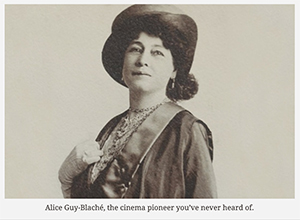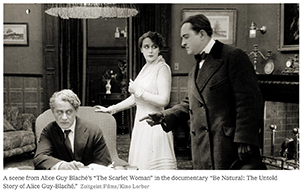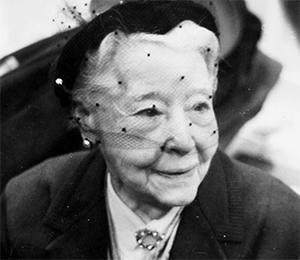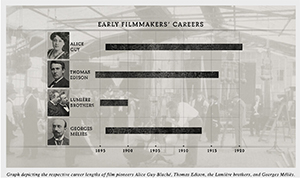In case you are new to this page, Be Natural is the feature-length documentary based, in part, on my book, Alice. Here is a link to the Be Natural Page that lists where the film can be seen in theaters this month and into June, both in the U.S. and internationally.
Here are links to some reviews:

See this movie. Make it known with your box-office dollars — if possible — that you care about this stuff. Because if you love movies and you don’t care, you’re just not paying attention.
Read the entire review On Flick Philosopher
“There has been a longstanding myth that filmmaking is a man’s game,” she continued, “and that narrative has had a lot of sway and has obscured the careers of many women, probably most egregiously Guy Blaché.” (Shelley Stamp, quoted in the review)
NY Times Review by Elizabeth Weitzman
 She was, in sum, a studio chief as well as a director and producer — a key figure in the emergence of two major national cinemas. The recovery of this reputation is central to Green’s project, and she builds on the work of historians and archivists, including Guy Blaché’s biographer, Alison McMahan.
She was, in sum, a studio chief as well as a director and producer — a key figure in the emergence of two major national cinemas. The recovery of this reputation is central to Green’s project, and she builds on the work of historians and archivists, including Guy Blaché’s biographer, Alison McMahan.
NY Times Critic's Pick by A.O. Scott
"Be Natural" draws on the 2002 book "Alice Guy-Blache: Lost Visionary of the Cinema" by Alison McMahan. In order to liven up what can seem like a dusty subject, Green uses whimsical color visuals to conjure Paris in 1895. That was the year Guy-Blache, then Alice Guy, a 22-year-old secretary for a camera company, witnessed the work of Auguste and Louis Lumiere's Cinematographe, one of the first reliable ways to project motion pictures. The results — simple scenes of people walking around — were revelatory.
Yet at the time, films had no narrative structure. They were slices of life: the crashing of waves at a beach, trains pulling into a station.
Guy-Blache changed that.
Review in the Telegraph (U.K.)

Green overplays the mystery story and procedural angles of "Be Natural," and tries to gin up the energy of the film with way too many rapid-fire edits. Viewers may find themselves wishing she would slow down, the better to allow Guy-Blaché's sublime sense of framing and humor to play out. But the sometimes frenetic pacing doesn't detract from the enormous value Green provides in bringing to light some of the finest, most groundbreaking work of early cinema, by an artist who helped invent a language we're still using today. (The title is taken from a banner that Guy-Blaché hung at her Fort Lee studio as a reminder to her actors - four decades before Marlon Brando would make that advice a Hollywood watchword.)
Ann Hornaday for The Washington Post
This one is a reprint but has a nice giphy of Alice looking at a Kinora:
In her film, Green makes a comparison between YouTubers and Instagramers discovering their platform for the first time and Blaché telling stories visually back in the early 190ss. The director believes this allowed Blaché to tap into the comedic and intellectual sides of her personality.
CBS Interview with Pamela Green

Alice Guy-Blaché was one of the first directors to use color and to synch sound with the camera. She was also one of the first directors to direct a film with an all-black cast, A Fool And His Money starring James Russell. She was incredibly innovative, and it’s a shame that for all the work she did, she died in relative obscurity. She wrote her memoirs well before her death, and no one was interested in publishing them. They would eventually be published eight years after death.